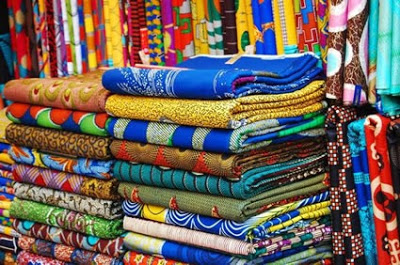India is as diverse as a nation can possibly be, with equally illustrious textile traditions, that span back more than two millennia. It is also the home of the great khadi movement, and as Aatmanirbhar Bharat re-ushers another glorious chapter of self-reliance, it will create boundless opportunities for domestic industries to bloom, flourish and expand.
The Indian textile industry has been the backbone of our economy, representing not just the culture of India, but also the roots and rich heritage of our great country. Extremely vital for the domestic economy, it contributes 2.3 per cent to India’s GDP, 7 per cent of the total industrial output and 12 per cent to the export earnings and employs over 45 million people directly.
The role of the textile sector is crucial to realising the goal of Aatmanirbhar Bharat. The recent initiatives to boost the domain by the central government, such as focused product investment scheme to increase investments in the sector, especially in man-made fibre (MMF) and technical textile segments is proof of its boundless potential.
As of today, India imports nearly 75% of machinery for the industry – an indicator of how Aatmanirbhar can help India expand further as a textile hub. The five pillars of Aatmanirbhar Bharat are economy, infrastructure, system, vibrant demography, and demand.
Helping generate new opportunities for the domestic market, Aatmanirbhar Bharat expands upon the principles of self-reliance for the sector and the economy. COVID-19 also plays an intrinsic part in shaping this new wave for the Indian textile sector, as global players in key markets around the world continue to adopt the China plus one strategy. This has significantly boosted international opportunities for the local textile companies. The government is also continuously pushing for expansion of the textile industry through initiatives, such as the Union Cabinet’s recent approval of the Production Linked Incentive (PLI) scheme for textiles, which will provide incentives worth ₹10,683 crore over the next five years.
As India continues to make great strides in global trade through favourable international environment and support of the government, there are many key trends shaping the swiftly expanding textile sector. One of the key factors driving the same is the concept of sustainability, which is one of the most popular trends to take over the world of retail. Sustainability is an extremely important factor when it comes to the future of this industry, and India can play a major role in spearheading this swiftly growing segment. Giving a boost to domestic production, sustainable fashion has taken the markets by storm owing to unique concepts such as its design led strategies and shortened supply chain. The trend will not only move India towards growth, but will also elevate its importance internationally owing to the environmental consciousness it promotes. As the trend continues to transform the textile business, it is the best time for the country to embrace sustainable fashion, and charter a new path for the future, through the domain’s many innovations for the industry, such as integration of futuristic technology with traditional Indian textiles.
This is also reflected in changing consumer behaviour. According to a survey by Business Research Company in 2020, over 66% of customers stated that they consider sustainability when purchasing a luxury product. Sustainability is driving the future of the segment, with people becoming increasingly conscious of their lifestyle to lessen the environmental impact. The modern Indian customer is also looking for more, including recycling of the product, expecting environment-friendly packaging and is even willing to pay more for brands that follow healthy environmental practices and have an eco-friendly structure. Thus, sustainability is going to be on top of the mind of consumers in the coming future. Many brands are adapting to a new eco-friendly fashion through a sustainable lifestyle, supporting the industry to recycle its own goods and promoting self-reliance.
Incidentally, sustainable fashion is also creating new opportunities for artisans in the country to promote local designs – a true example of Aatmanirbhar Bharat. As per a report by UN Environment Programme, 10 per cent of global carbon emissions are produced by the fashion industry, which is more than that produced collectively by international flights and maritime shipping. In the long run, it is indeed the way forward for a healthier domestic ecosystem. The movement has also achieved significant strides internationally, making it an excellent opportunity to increase India’s imports creating an avenue for domestic players to spearhead this new era of fashion while empowering other businesses to take a step in the right direction.
Subsequently, another key trend making waves globally and changing the dynamic retail landscape is increased digitization. As the lockdown progressed, India swiftly emerged as a digital powerhouse, combating the effects of the pandemic through digital connectivity. It is a trend that has translated into every aspect of the industry and has significantly changed consumer behaviour creating great opportunities for tech evolution.
Digital innovations and changing customer expectations are indicative of new business models and organisational principles in the textile industry as Indian MSMEs continually adopt international standards, updating their offerings with best-in-class tech integration. One of the factors driving this new era for the textile world is an ever-increasing shift in customized offerings. Consumers everywhere are increasingly influenced by devices that allow access to the digital world at all times. Shoppers no longer look for traditional standard products and standard communication. They prefer customization which in turn, is helping the domestic segment to expand and flourish.
The digital landscape is also significantly changing the future course of the industry – a fact well recognized by the Indian government. Government has taken several virtual steps to support the handloom and handicrafts sector and onboard weavers/artisans on Government e-Marketplace (GeM) – an excellent tool enabling them to sell their products directly to various government departments and organisations and helping them tap new markets. According to IBEF, over 171,167 weavers/artisans/handloom entities have been registered on the GeM portal as of December 2020.
Digitization is also transforming the traditional textile landscape with the advent of technical textiles that are likely to grow more than ever, and can act as a catalyst for India’s increasing share of global exports. India is the sixth largest producer of technical textiles, with a 6 per cent global share. Recognising the immense potential of the segment, Indian government announced setting up of seven mega textile parks along with the currently operational park to help players capitalise on the inherent advantages of textile industry of India.
With functional fabrics that have applications across some of the most important industries across the world, including automobiles, civil engineering and construction, agriculture, healthcare, industrial safety, and personal protection, technical textiles represent the future of the domain. A growing awareness of the superior functionality of these new products has also encouraged higher consumption of its unique offerings across various segments.
One such segment, that has become more relevant than ever post the pandemic, is the medical textiles domain of technical textiles. Demand for the same has grown in leaps and bounds. It is also known to offer better protection against many infections. With applications ranging from face masks to FFP2 facial shields, to surgical clothing and drapes, disposable nitrile gloves, goggles or visors – importance of technical textiles has increased in the post COVID world. With multinational companies wanting to move out of China, India can not only fulfil domestic needs but also export to booming markets in Europe, Australia, and America.
Lastly, integrating the domestic textiles segment in the best possible way while swiftly transforming the Indian landscape, is the country’s emerging e-commerce segment. With the sale of goods and apparel witnessing a steep rise in 2020, the market has expanded exponentially, with work from home leading to a very high demand for casual wear apparel. The volume of India’s e-commerce orders increased by 36% in the last quarter of 2020, according to IBEF, proving that e-commerce is indeed fast emerging as the preferred medium for shopping for millions in the country and continually driving digitization.
Expanding at a rapid pace, the advent of e-commerce in India has revolutionized the entire marketplace, creating new verticals for growth, while helping brands leverage their e-strength in technology and talent to reach out to a wider set of consumers. Enabling convenience, to make life easier for shoppers everywhere, especially amidst frequent national lockdowns, e-commerce has quickly won the trust and loyalty of countless digital consumers, and has become an absolute necessity to drive business, even for the most established retail giants, giving a huge boost to the domestic industry.
Aatmanirbhar Bharat today is not just an ideal but a vision which will be realised soon, given the many empowering strides taken by the segment in the right direction. Enabling ease of business and creating strong domestic ties for mutual growth in the domain, it constitutes many futuristic innovations, rooted in the great textile tradition of India. As the country becomes more self-reliant, the textile industry will continue to scale up rapidly, through the proactive policy support of the government and disrupt domestic markets as well as deepen the niche in diversity, manufacturing, and design for the textile world.
Views of the author are personal and do not necessarily represent the website’s views.
 Mr. Vikash Agarwal has been the architect behind some of the most successful product launches for Rupa such as MacroMan M Series and MacroWoman. With his keen financial acumen, Mr. Agarwal is foundational to the strategic growth and vision-oriented leadership team at Rupa. In his role as Finance President, Mr. Agarwal is acknowledged for building a progressive and popular ‘Made in India’ brand and effectively drives growth numbers with consistent success for Rupa group’s financial portfolio.
Mr. Vikash Agarwal has been the architect behind some of the most successful product launches for Rupa such as MacroMan M Series and MacroWoman. With his keen financial acumen, Mr. Agarwal is foundational to the strategic growth and vision-oriented leadership team at Rupa. In his role as Finance President, Mr. Agarwal is acknowledged for building a progressive and popular ‘Made in India’ brand and effectively drives growth numbers with consistent success for Rupa group’s financial portfolio.
Thank you for reading the column. Please drop a line and help us do better.


